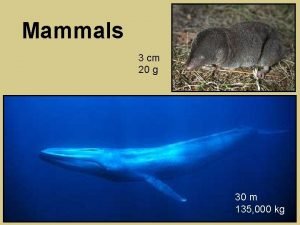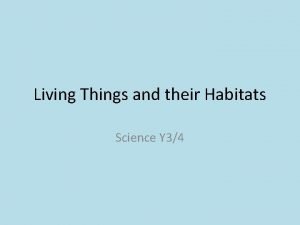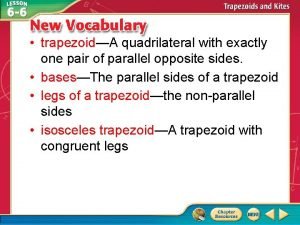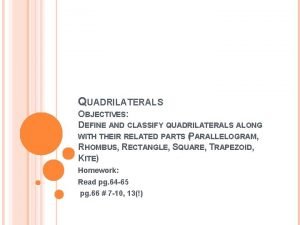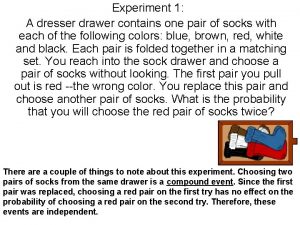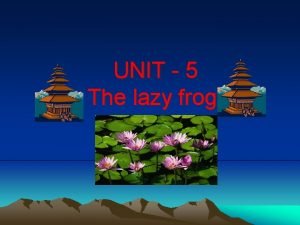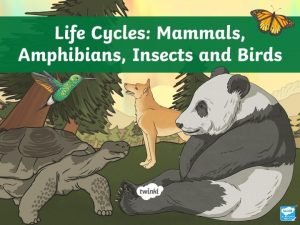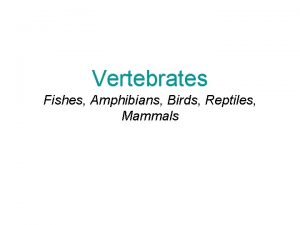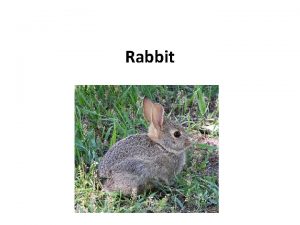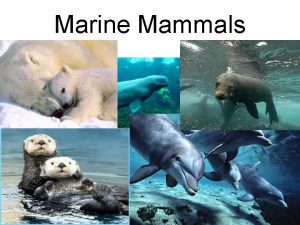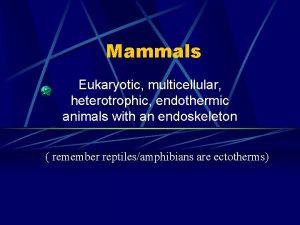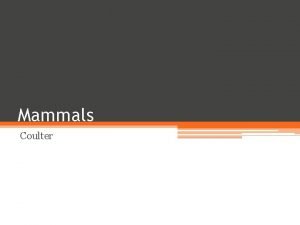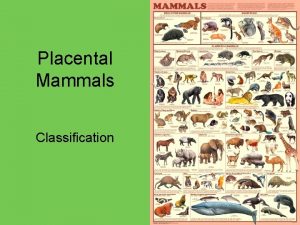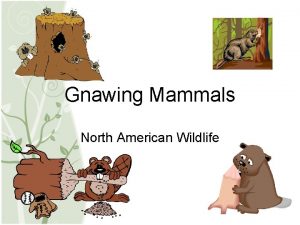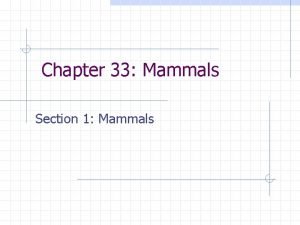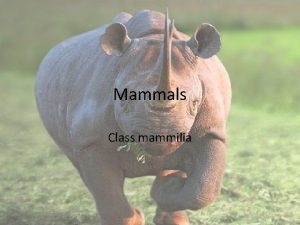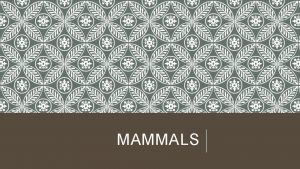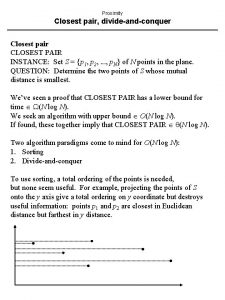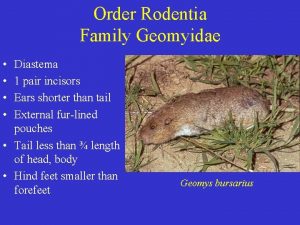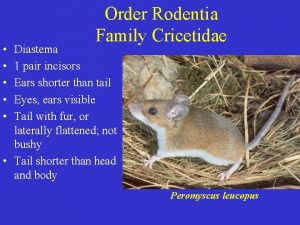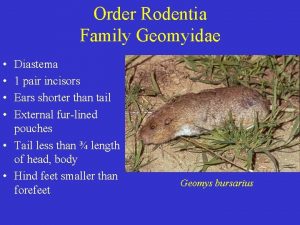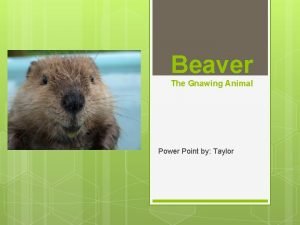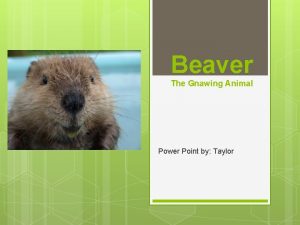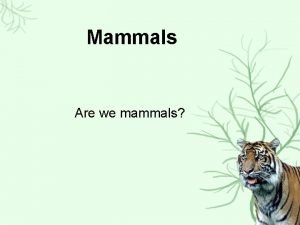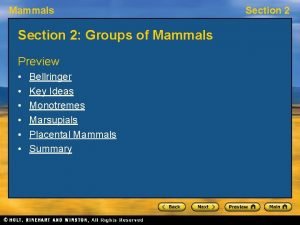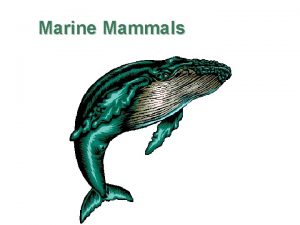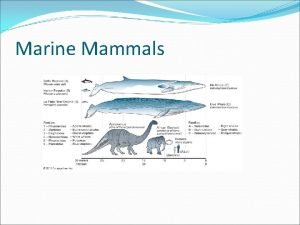Rodentia Gnawing Mammals Rodentia Checklist one pair of




























- Slides: 28

Rodentia: Gnawing Mammals

Rodentia Checklist • one pair of upper and lower incisors – each enlarged, sharply beveled, ever-growing – enamel on outer surface only • diastama between incisors and premolars • other skull features

Sciuridae: Squirrels

Gray Squirrel Sciurus caroliniensis • melanistic (black) form in some areas • Besides nuts, also eat flowers, bark, buds, bird eggs, insects, carrion

Fox Squirrel Sciurus niger • “fox” refers to the reddish color • less arboreal, favors more open habitats

Red Squirrel Tamiasciurus hudsonicus • favors evergreens to mixed forests • store unripe cones in middens • also eat bird eggs, mushrooms • loud and vocal

Southern Flying Squirrel Glaucomys volans • more common of the two species • glide rather than powered flight • prefers deciduous woods • diet of fungi, lichens, nuts, seeds, bird eggs, sap

Northern Flying Squirrel Glaucomys sabrinus • • prefer coniferous woods doesn’t hibernate eat hypogenous fungi susceptible to nematode parasite, Stongyloides robustus • G. volans is less susceptible

Eastern Chipmunk Tamias striatus • Facial stripes • Cheek pouches • 1 in east, 21 in west

Woodchuck Marmota monax • are a ground squirrel • AKA groundhog, whistle-pig • true hibernators • burrow up to 30’

Castoridae Beaver Castor canadensis • our largest rodent • perhaps most important animal in settling of North America • tail slapping threat behavior • can remain submerged 15 minutes

Cricetidae: Native Rats, Mice & Voles Largest family of NA mammals

Muskrat Ondatra zibethicus • feed on cattails and aquatic plants • actively scent-mark territories, hence the name • domed huts • tapered, hairless, scaly tail differs from beaver’s flat tail

Deer Mouse Peromyscus maniculatus

White-footed Mouse Peromyscus leucopus

Eastern Woodrat Neotoma floridana

Southern Red-backed Vole Clethrionomys gapperi

Meadow Vole Microtus pennsylvanicus

Rock Vole Microtus chrotorrhinus

Woodland Vole Microtus pinetorum

Southern Bog Lemming Synaptomys cooperi

Muridae: Old World Rats & Mice

Norway Rat (I) Rattus norvegicus

House Mouse (I) Mus musculus

Zapodidae: Jumping Mice Meadow Jumping Mouse Zapus hudsonius

Woodland Jumping Mouse Napaeozapus insignis

Erethizontidae: Porcupines Porcupine Erethizon dorsatum • quills are modified hairs with barbed tip • few predators except Fisher • in winter, feed on inner bark of trees • more varied diet in summer

 Mammals and non mammals
Mammals and non mammals Vertebrates and invertebrates
Vertebrates and invertebrates Python find pairs in list
Python find pairs in list Dof of screw pair
Dof of screw pair One empire one god one emperor
One empire one god one emperor One one one little dogs run
One one one little dogs run One king one law one faith
One king one law one faith One empire one god one emperor
One empire one god one emperor Ford one plan
Ford one plan See one do one teach one
See one do one teach one See one, do one, teach one
See one, do one, teach one Structure of twelfth night
Structure of twelfth night Studiendekanat uni bonn
Studiendekanat uni bonn Asean tourism strategic plan
Asean tourism strategic plan Asean one vision one identity one community
Asean one vision one identity one community If bcde is a kite
If bcde is a kite Medians of trapezoids
Medians of trapezoids What shapes have 2 pairs of parallel sides
What shapes have 2 pairs of parallel sides A dresser drawer contains one pair of socks
A dresser drawer contains one pair of socks Two rhyming words for frog
Two rhyming words for frog Types of simple machines
Types of simple machines Whats the opposite of a mammal
Whats the opposite of a mammal Choradate
Choradate Rabbits are small mammals in the family
Rabbits are small mammals in the family Parthenogenesis in mammals
Parthenogenesis in mammals What us a mammal
What us a mammal Characteristics of mammals
Characteristics of mammals Multicellular heterotrophic
Multicellular heterotrophic Features of mammals
Features of mammals
